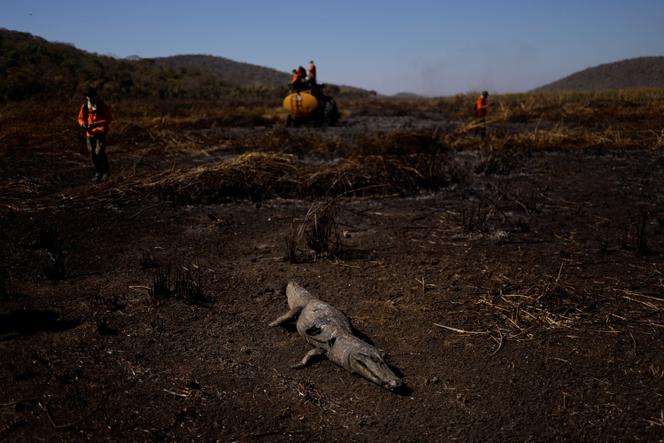


The respite was short-lived. Devastated by massive fires in 2020, the Pantanal is once again ravaged by flames. According to Brazil's National Institute for Space Research, the area has seen more than 2,500 fires since the start of 2024, a catastrophic 1,776% increase on the same period in 2023, just as the dry season is beginning.
At least 372,000 hectares (equivalent to the size of the French department of Vaucluse) have already been destroyed by the flames, mainly in Mato Grosso do Sul, one of the two regions, along with Mato Grosso, that are home to this fragile ecosystem. The Pantanal, the largest wetland on the planet and a paradise for jaguars and caimans, extends over 200,000 square kilometers in South America, three-quarters of it in Brazil.
Images from the region show firefighters battling the blaze. Almost all the fires are on private property which is more difficult for the Prevfogo brigades deployed by the environmental police to access than public land. In this swampy area, travel is difficult. It can take up to seven hours to reach the areas most affected by the fires.
The devastation is all the more worrying as it affects a Pantanal that is in the process of recovery. In 2020, fires on an unprecedented scale claimed the lives of 17 million vertebrates and consumed 40,000 square kilometers of vegetation – a quarter of the ecosystem. In addition, it strikes a Brazil stunned by the proliferation of all kinds of natural disasters on its soil, from record heat waves in Rio de Janeiro to drought in the Amazon and deadly floods in Rio Grande do Sul, which have already claimed 177 lives.
From Porto Jofre, at the southern end of the Transpantaneira road in Mato Grosso, Rafael Hoogesteijn spotted the glow of flames on the horizon on the night of June 13. "The fires are now 40 or 50 kilometers to the west," said Hoogesteijn, local coordinator of the NGO Panthera Brasil, which protects the region's felines, in a phone call. "They're getting closer, driven by easterly winds, and taking advantage of very, very dry vegetation."
The region has been suffering from an almost chronic drought since 2019. Between December 2023 and May 2024, the upper basin of the Paraguay River, the main watercourse flooding the Pantanal, experienced a deficit of 277 millimeters compared with the historical norm. "It hardly rained at all this year: the vegetation continued to burn even during the wet season," said an astonished Hoogesteijn.
You have 50.84% of this article left to read. The rest is for subscribers only.
